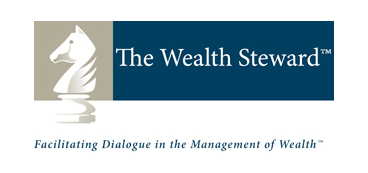By Dan Hallett on March 31, 2016
 Over the past several years, I met many investors who pulled money out of the market prior to the 2007-09 Financial Crisis. Their reasons for pulling out sounded logical. Their profits were big while the market was low. But these investors and others like them faced a sober reality as stock prices marched sharply higher in the face of the worries that prompted these folks to sell in the first place.
Over the past several years, I met many investors who pulled money out of the market prior to the 2007-09 Financial Crisis. Their reasons for pulling out sounded logical. Their profits were big while the market was low. But these investors and others like them faced a sober reality as stock prices marched sharply higher in the face of the worries that prompted these folks to sell in the first place.
Letting economic worries dictate when and how you invest doesn’t work and isn’t sustainable.
When I last heard from these hesitant investors they were still sitting in cash. And they’re in good company. A recent CIBC survey concluded that Canadians’ extra cash holdings – i.e. cash that would have otherwise been invested in stock market investments – ballooned to $75 billion as of December 2015. And CIBC noted that this stockpile – mostly built since 2012 – is still growing. While the size of the decline in Canadian stock prices is mild by bear market standards, it’s one of the longest-lasting at more than 18 months. That’s likely weighing on investors’ patience.
Today’s list of worries is likely longer than in 2012 or 2007. But I can’t recall a time when there was an absence of significant macroeconomic worries overhanging the market. In some of those years, financial markets went up. In others they lost money. While these investors might take credit for pulling out before a crash, I suspect this is more luck than skill. I speak from experience.
In 1999 I was a young analyst in the midst of the most distorted market in recent history. During the technology boom, Internet stock prices routinely skyrocketed on reports of increased website visits (not revenues or profits). Valuations made no sense. I avoided that craziness altogether. And after it started unravelling – with the market already in bear market territory – I was quoted in the National Post saying that technology stocks could fall by half and still be expensive.
In hindsight, that quote turned out to be accurate but there was luck involved. There are different drivers to every bear market. While the 1998-2000 run up in tech stocks ignored valuations, the subsequent decline was very valuation-driven. I am a price-sensitive analyst who happened to be in the midst of a valuation-driven bear market. But using market valuations alone to decide when and how much to invest is unreliable – even in back testing.
Similarly, in recent years it was tempting to avoid European stocks in 2012 and 2013 when the PIIGS (to denote European countries flirting with debt defaults) acronym was popularized. Europe was drowning in bad news while emerging market countries were expected to pull the world out of its sluggish growth phase. Yet neither the economic trends nor the investment climate evolved as expected.
Europe topped the world’s stock markets in 2012 and 2013. And Greece (the ‘G’ in PIIGS) was among the top performing markets. Those emerging markets? Well, both the economies and the stock markets of emerging markets countries have since struggled. Similarly, when everyone was down on the U.S. in 2010 I wrote that everyone’s disdain likely made it an attractive investment.
I also met a few people in 2012 that had a windfall of cash to invest. At that time, the market had nicely rebounded from the Financial Crisis and the strong rebound – adding valuation risk to the list of worries. These people continued sitting on their cash windfall hoping for the next bear market so they could jump in at much lower prices. But missing the intervening years of strongly-rising prices made these folks worse off – even after counting this year’s market decline.
A healthy economic backdrop can be a stock market tailwind but the two usually don’t go hand-in-hand in the short term. So trying to invest based on headlines and fear doesn’t work. The best way to protect yourself is to immunize your portfolio by matching your investment assets with planned spending liabilities.
We call this a goals-based approach to portfolio construction. And that’s the most reliable way to invest – particularly in the face of so many economic worries.
HighView Financial Group is an investment counselling firm for affluent families and foundations. We build portfolios based on each client’s unique goals and tolerance for risk. Schedule a complimentary discovery session to see if we’re the right investment stewardship counsellors for you.
You may also be interested in:
- What the 2016 Federal Budget Means for High Net Worth Canadians [Video]
- Mitigating Investment Portfolio Volatility
- Debunking the Investment Industry: Is Your Investment Portfolio Structured for Relative or Absolute Benchmarking? [Video]
- Piling into U.S. stocks? Don’t Expect the Past Decade to Repeat - January 15, 2025
- The S&P 500’s Three Surprising Traits - November 6, 2024
- Savvy DIY Investors Must Plan For Succession - September 4, 2024



